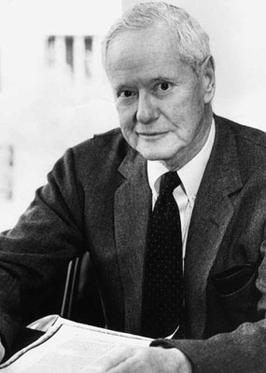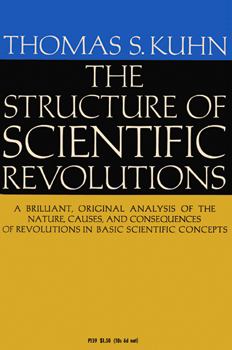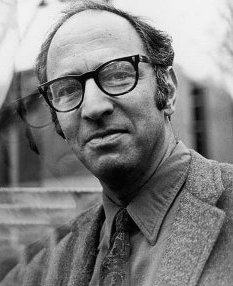
Michael Polanyi was a Hungarian-British polymath, who made important theoretical contributions to physical chemistry, economics, and philosophy. He argued that positivism is a false account of knowing.

The sociology of knowledge is the study of the relationship between human thought, the social context within which it arises, and the effects that prevailing ideas have on societies. It is not a specialized area of sociology. Instead, it deals with broad fundamental questions about the extent and limits of social influences on individuals' lives and the social-cultural basis of our knowledge about the world. The sociology of knowledge has a subclass and a complement. Its subclass is sociology of scientific knowledge. Its complement is the sociology of ignorance.
In science and philosophy, a paradigm is a distinct set of concepts or thought patterns, including theories, research methods, postulates, and standards for what constitute legitimate contributions to a field. The word paradigm is Greek in origin, meaning "pattern".

Robert King Merton was an American sociologist who is considered a founding father of modern sociology, and a major contributor to the subfield of criminology. He served as the 47th president of the American Sociological Association. He spent most of his career teaching at Columbia University, where he attained the rank of University Professor. In 1994 he was awarded the National Medal of Science for his contributions to the field and for having founded the sociology of science.

The Structure of Scientific Revolutions is a book about the history of science by the philosopher Thomas S. Kuhn. Its publication was a landmark event in the history, philosophy, and sociology of science. Kuhn challenged the then prevailing view of progress in science in which scientific progress was viewed as "development-by-accumulation" of accepted facts and theories. Kuhn argued for an episodic model in which periods of conceptual continuity and cumulative progress, referred to as periods of "normal science", were interrupted by periods of revolutionary science. The discovery of "anomalies" accumulating and precipitating revolutions in science leads to new paradigms. New paradigms then ask new questions of old data, move beyond the mere "puzzle-solving" of the previous paradigm, alter the rules of the game and change the "map" directing new research.
Stigler's law of eponymy, proposed by University of Chicago statistics professor Stephen Stigler in his 1980 publication "Stigler's law of eponymy", states that no scientific discovery is named after its original discoverer. Examples include Hubble's law, which was derived by Georges Lemaître two years before Edwin Hubble; the Pythagorean theorem, which was known to Babylonian mathematicians before Pythagoras; and Halley's Comet, which was observed by astronomers since at least 240 BC.
The historiography of science or the historiography of the history of science is the study of the history and methodology of the sub-discipline of history, known as the history of science, including its disciplinary aspects and practices and the study of its own historical development.

Florian Witold Znaniecki was a Polish and American philosopher and sociologist who taught and wrote in Poland and in the United States. Over the course of his work, he shifted his focus from philosophy to sociology. He remains a major figure in the history of Polish and American sociology; the founder of Polish academic sociology, and of an entire school of thought in sociology.
Sociocultural evolution, sociocultural evolutionism or social evolution are theories of sociobiology and cultural evolution that describe how societies and culture change over time. Whereas sociocultural development traces processes that tend to increase the complexity of a society or culture, sociocultural evolution also considers process that can lead to decreases in complexity (degeneration) or that can produce variation or proliferation without any seemingly significant changes in complexity (cladogenesis). Sociocultural evolution is "the process by which structural reorganization is affected through time, eventually producing a form or structure that is qualitatively different from the ancestral form".
Piotr Sztompka is a Polish sociologist known for his work on the theory of social trust. He is professor of sociology at the Jagiellonian University in Kraków, Poland, and has also frequently served as visiting professor at the University of California, Los Angeles, and at Columbia University in New York City.
In epistemology, and more specifically, the sociology of knowledge, reflexivity refers to circular relationships between cause and effect, especially as embedded in human belief structures. A reflexive relationship is multi-directional when the causes and the effects affect the reflexive agent in a layered or complex sociological relationship. The complexity of this relationship can be furthered when epistemology includes religion.

Value-added theory is a sociological theory, first proposed by Neil Smelser in 1962, which posits that certain conditions are needed for the development of a social movement.
The Merton thesis is an argument about the nature of early experimental science proposed by Robert K. Merton. Similar to Max Weber's famous claim on the link between Protestant work ethic and the capitalist economy, Merton argued for a similar positive correlation between the rise of Protestant Pietism and early experimental science. The Merton thesis has resulted in continuous debates.

Manifest and latent functions are social scientific concepts created by anthropologist Bronisław Malinowski in 1922 while studying the Trobriand Islanders in the Western Pacific. It was later modified for sociology by Robert K. Merton. Merton appeared interested in sharpening the conceptual tools to be employed in a functional analysis.

Social Theory and Social Structure (STSS) was a landmark publication in sociology by Robert K. Merton. It has been translated into close to 20 languages and is one of the most frequently cited texts in social sciences. It was first published in 1949, although revised editions of 1957 and 1968 are often cited. In 1998 the International Sociological Association listed this work as the third most important sociological book of the 20th century.
In 1942, Robert K. Merton described four aspects of science that later came to be called Mertonian norms: "four sets of institutional imperatives taken to comprise the ethos of modern science... communism, universalism, disinterestedness, and organized skepticism". The subsequent portion of his book, The Sociology of Science, elaborated on these principles at "the heart of the Mertonian paradigm—the powerful juxtaposition of the normative structure of science with its institutionally distinctive reward system".
The concept of multiple discovery is the hypothesis that most scientific discoveries and inventions are made independently and more or less simultaneously by multiple scientists and inventors. The concept of multiple discovery opposes a traditional view—the "heroic theory" of invention and discovery. Multiple discovery is analogous to convergent evolution in biological evolution.

Sociology is the scientific study of human society that focuses on society, human social behavior, patterns of social relationships, social interaction, and aspects of culture associated with everyday life. Regarded as a part of both the social sciences and humanities, sociology uses various methods of empirical investigation and critical analysis to develop a body of knowledge about social order and social change. Sociological subject matter ranges from micro-level analyses of individual interaction and agency to macro-level analyses of social systems and social structure. Applied sociological research may be applied directly to social policy and welfare, whereas theoretical approaches may focus on the understanding of social processes and phenomenological method.
Thomas F. Gieryn is Rudy Professor of Sociology at Indiana University. He is also the Vice Provost of Faculty and Academic Affairs. In his research, he focuses on philosophy and sociology of science from a cultural, social, historical, and humanistic perspective. He is known for developing the concept of "boundary-work," that is, instances in which boundaries, demarcations, or other divisions between fields of knowledge are created, advocated, attacked, or reinforced. He has served on many councils and boards, including the Advisory Board of the exhibition on "Science in American Life" by the Smithsonian's National Museum of American History. He retired in 2015 from his professorship at Indiana University.

Thomas Samuel Kuhn was an American historian and philosopher of science whose 1962 book The Structure of Scientific Revolutions was influential in both academic and popular circles, introducing the term paradigm shift, which has since become an English-language idiom.







